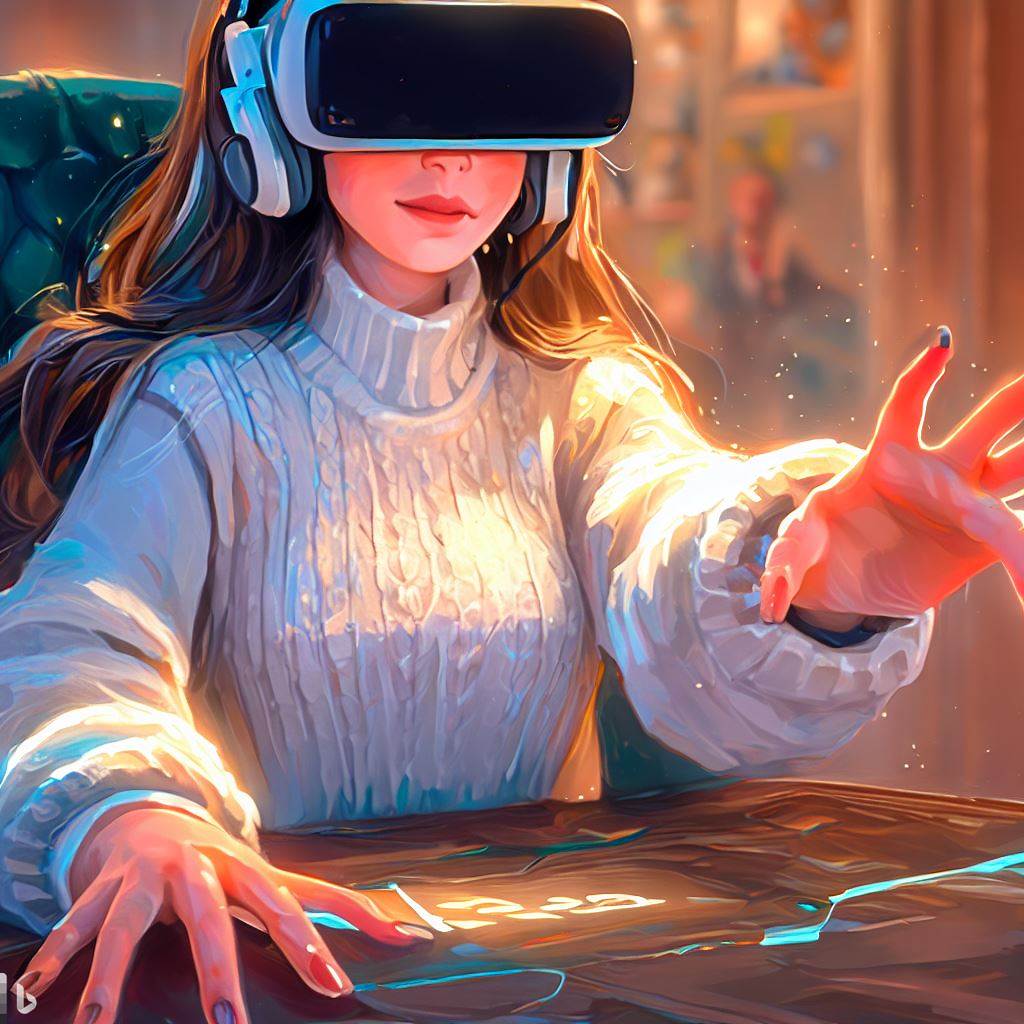VR Game Design Principles
VR Game Design Principles
Creating Engaging and Immersive Gameplay Experiences that players love
Hello Coders! 👩💻 Today, I want to share some design principles that are specifically useful when creating virtual reality games. VR has become more and more popular in recent years, literaly bringing a whole new level of immersion to gaming. But with that added dimension comes a unique set of challenges for game designers. So let’s dive into the key areas to consider when creating a captivating VR experience: spatial navigation, interaction mechanics, and comfort considerations.

Spatial Navigation: Guiding Players Through the Virtual World 🗺️
One of the most significant aspects of VR is the ability to move freely in a 3D environment. As designers, we need to guide players through these virtual spaces effectively and intuitively. Here are some things to keep in mind.
1. The Importance of Spatial Navigation 🗺️
In traditional gaming, we’ve grown accustomed to using various cues like maps, waypoints, and visual markers to help guide players through a game world. However, in VR games, these methods can sometimes feel unnatural or even break the immersion altogether.
This is where spatial navigation comes in. By utilizing spatial audio, visual cues, and other elements native to VR environments, we can provide players with a more intuitive and immersive way to navigate the virtual world.
2. Using Spatial Audio to Guide Players 🎧
Spatial audio is one of the most effective ways to guide players in VR games. By placing sounds in specific locations within the game world, you can create a realistic sense of direction for your players.
For example, imagine your player needs to find a hidden door that leads them to the next level. Instead of using a waypoint marker or map, you could place the sound of creaking hinges or faint whispers behind the hidden door. These audio cues will naturally draw the player’s attention and lead them to discover the hidden entrance.
3. Visual Cues and Environmental Design 🏞️
Another key aspect of spatial navigation is using visual cues and thoughtful environmental design to guide your players. This could be anything from lighting and color contrast to strategically placed objects that indicate a path or direction.
Let’s say your game takes place in a dark cave filled with branching pathways. To guide your player through this environment, consider using glowing plants or crystals that grow along the correct path. Not only will this create an enticing visual spectacle for your player, but it also serves as an intuitive way to navigate through the maze-like environment.
4. Movement Mechanics and Controls 🎮
Lastly, it’s essential to consider how movement mechanics and controls can impact spatial navigation in your VR game. For instance, implementing teleportation as a primary movement method may affect how players perceive distance and direction within your game world.
To counteract this potential issue, you could incorporate elements like momentum or inertia into your teleportation mechanic so that players still have a sense of direction when they’re zipping around the virtual space.
Interaction Mechanics: Making Players Feel in Control
One of the most critical aspects of a great virtual reality gaming experience is making players feel like they’re in control of their virtual environment. Lets talk a about how to achieve this highly sought-after feeling of immersion and control in your VR games.
1. Consistent Physics 🌐
It’s essential to make sure that the virtual world feels responsive and consistent with real-world physics. This means that objects should react as players would expect them to in the real world when interacting with them. For example, if a player picks up a ball and throws it, it should bounce off walls or other objects in a way that feels natural.
Ensure that your physics system is robust and well-tuned so that players can anticipate the consequences of their actions accurately. This sense of predictability will help players feel more in control of their environment.
2. Direct Manipulation 🤲
A crucial aspect of immersion is allowing players to directly manipulate objects in the virtual world. This means enabling them to grab, push, pull, or otherwise interact with objects using their virtual hands or controllers intuitively.
Provide visual and auditory feedback to indicate when a player has successfully grabbed an object and ensure that the object follows the player’s hand movements closely. This kind of direct manipulation helps players feel more connected to the virtual world and gives them a greater sense of agency.
3. Gestures and Natural Interactions 👋
Incorporate intuitive gestures and natural interactions into your game design to make navigation and interaction feel seamless. For instance, if a player wants to open a door, they should just have to reach out and grab the handle, then push or pull it as they would in real life.
Using gestures like swiping through menus or pinching objects to resize them can also add depth to your interaction mechanics while keeping controls simple and accessible.
4. Personal Space Awareness 🚀
Respect your players’ personal space by designing interactions that don’t require them to uncomfortably reach too far away or invade their own physical space. The last thing you want is for players to get frustrated because they can’t interact with an object just out of reach or accidentally bump into something in their real environment.
Design interactions that accommodate different play spaces and allow players to stay within their comfort zone while still feeling fully immersed in the game world.
Keeping Players Happy and Healthy in VR Game Development
1. Smooth Locomotion 😌
One of the most jarring aspects of VR gaming is locomotion - the way players move through the virtual environment. Traditional games often rely on thumbsticks or WASD keys for movement, but these methods can cause motion sickness in VR.
The solution? Smooth locomotion! This technique allows players to glide through the virtual world with minimal discomfort. A few tips for implementing smooth locomotion include:
- Avoid sudden stops or changes in direction.
- Gradually accelerate and decelerate player movements.
- Use natural, human-like motions whenever possible.
Remember, your players’ comfort should always come first. The smoother their movements feel, the more immersed they’ll be in your game.
2. Stable Camera 📷
A stable camera is essential for maintaining player comfort in VR games. Sudden camera shifts or shaky visuals can make players feel disoriented, dizzy, or even nauseous.
Here are a few ways to keep your camera as stable as possible:
- Make sure your player’s head position directly affects the camera.
- Utilize a “comfort mode” that limits the range of motion and rotation.
- Avoid abrupt camera movements like sudden jumps or rotations.
By keeping your camera steady, you’ll create a more enjoyable experience for your players.
3. Adjustable Settings ⚙️
Finally, it’s crucial to remember that every player is different. What might be comfortable for one person could cause discomfort for another. To accommodate various preferences and sensitivities, offer adjustable settings within your game.
Some settings worth considering include:
- Movement speed: Allow players to choose their preferred pace.
- Rotation speed: Let players decide how quickly they want to turn within the virtual environment.
- Field of view (FOV): Offer adjustable FOV settings to help minimize motion sickness.
- Comfort mode: Give players an option to enable/disable comfort features like snap turning or limited head movement.
By providing customizable options, you empower your players to tailor their VR experience according to their individual needs.
Wrapping up
By considering these design principles when crafting your next VR game, you’ll be well on your way to creating an engaging and immersive gameplay experience that keeps players coming back for more.
Happy Coding! 🚀






